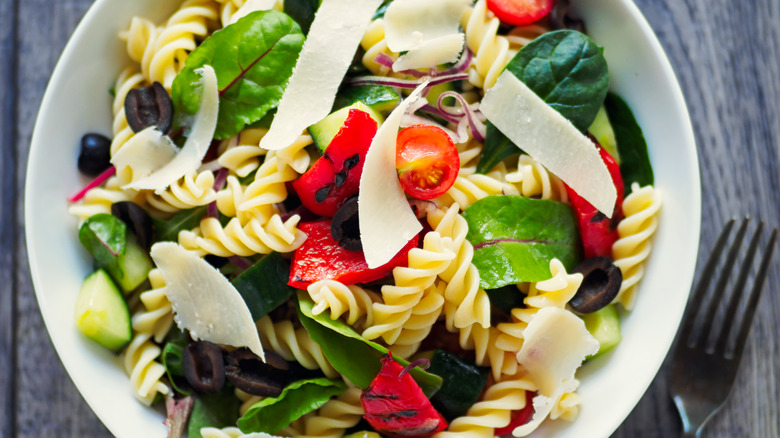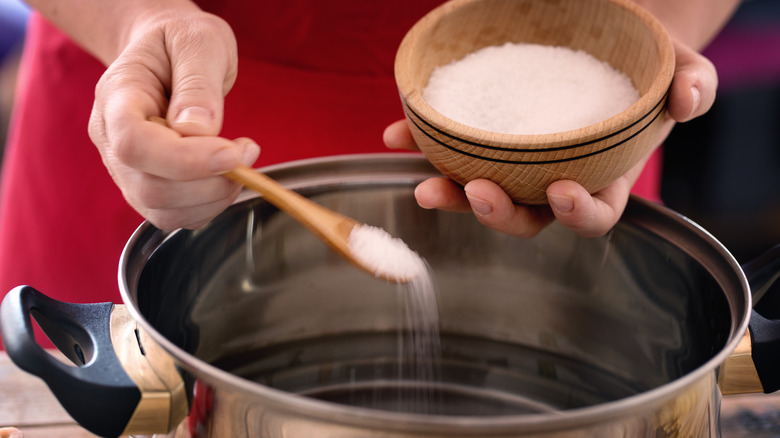The Tip To Remember When Salting Water For Pasta Salad
For a cookout or warm summer night, pasta salad is a dish best-served cold. While it can be a delicious and bright addition to a meal, pasta salad has a reputation for being a bland clump of mushy noodles that sits out on the picnic table for hours on end. The antidote to a flavorless noodle comes down to seasoning. When you're making pasta salad, you need to vastly increase the amount of salt you'd typically add to your pasta water for perfectly seasoned cold noodles.
A common kitchen tip is to salt your pasta water so that it's as salty as the sea, but for this type of noodle preparation, you want to add even more salt than usual to the boiling water. While everyone will have a slightly different view on this, a good ratio for a hot pasta dish is around 1 tablespoon of kosher salt for every 4 quarts of water, to cook 1 pound of pasta. But for pasta salad, a good ratio is 4 tablespoons of salt for every 4 quarts of water.
Why increase the salt in your pasta water?
Heavily salting your cooking water has to do with the temperature at which the pasta salad is served. Since the finished dish is chilled or at room temperature, what might taste well-seasoned while hot, will taste duller when it's colder.
The reason is the higher the temperature of the food, the more our taste buds are receptive to taste, sending signals to the brain to perceive sweet and salty. For example, the pure sweetness of ice cream tastes more intense when it's slightly melted compared to when it's frozen solid. Therefore, you want to season colder foods, like pasta salad, more than usual so that your taste buds can detect the flavors.
This extra-seasoning method is helpful not only for the noodles, but should also be used for the other ingredients in your salad, especially if it's to be chilled in the fridge. In short, the key to a delicious, cold pasta salad is ample seasoning.

